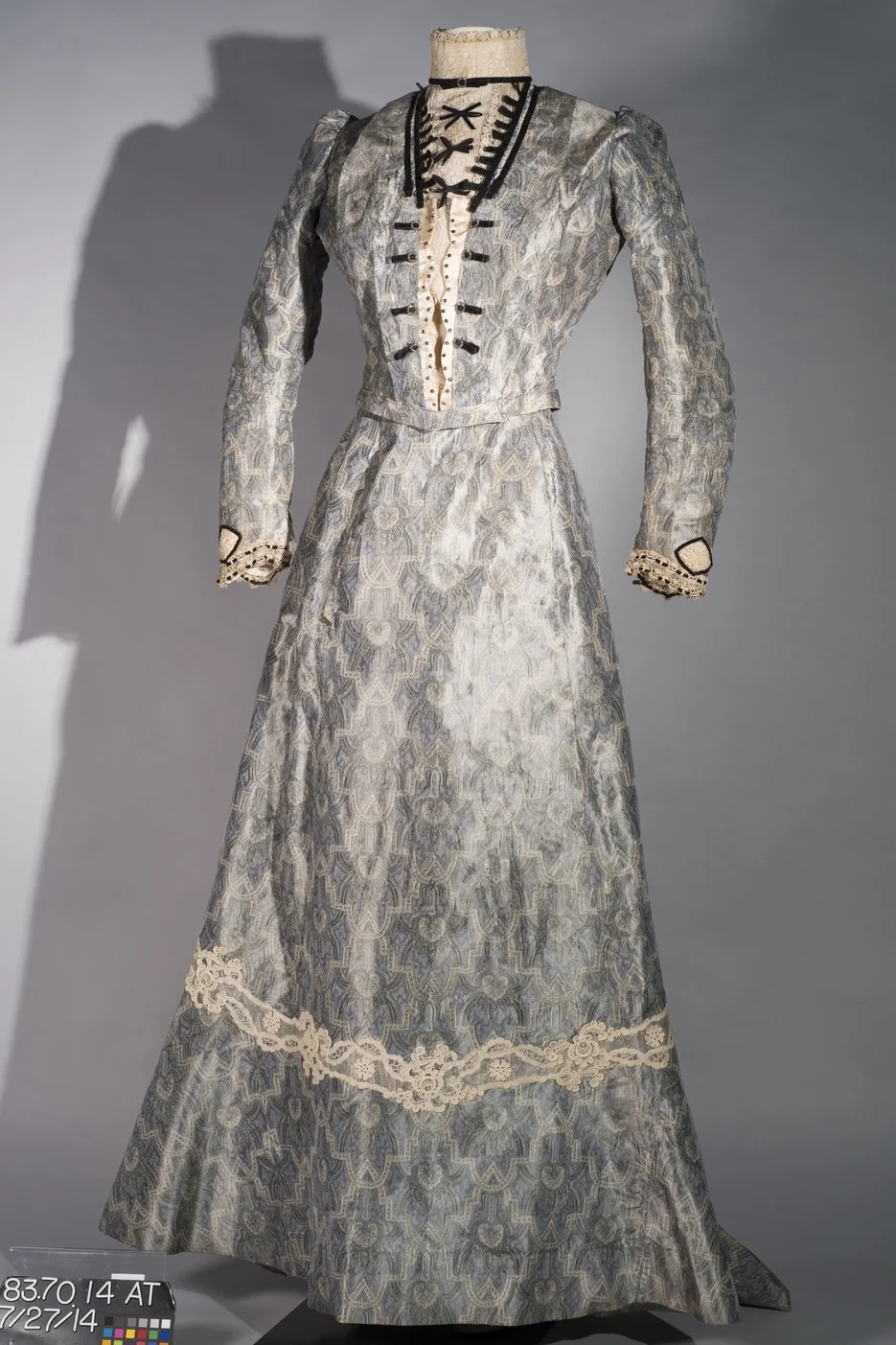




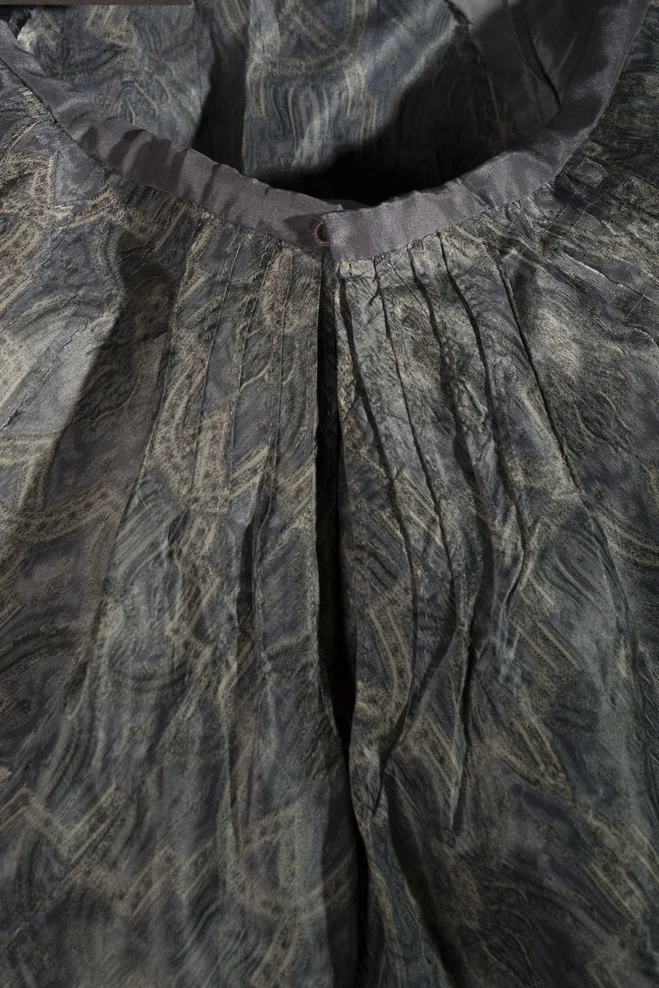

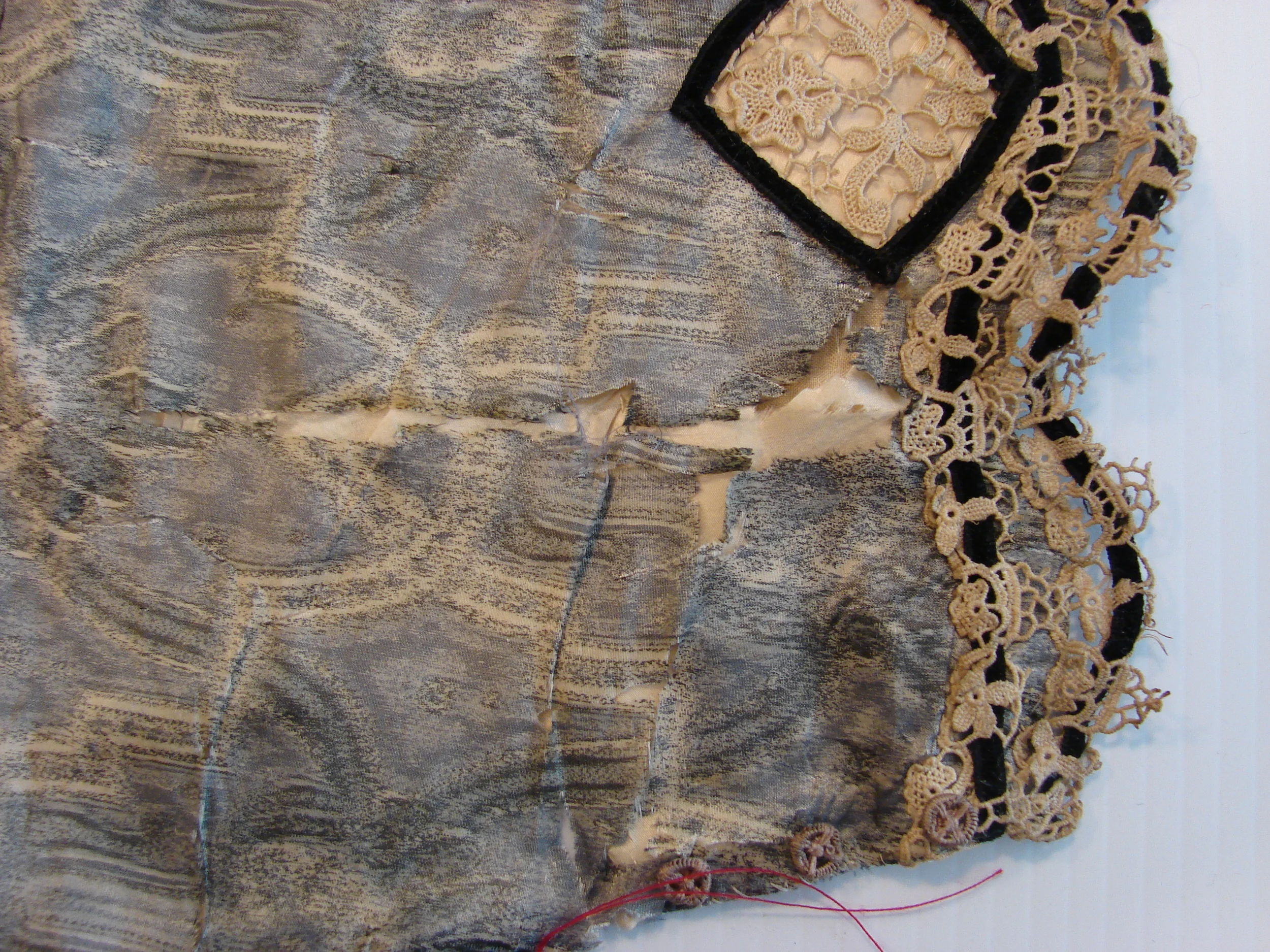
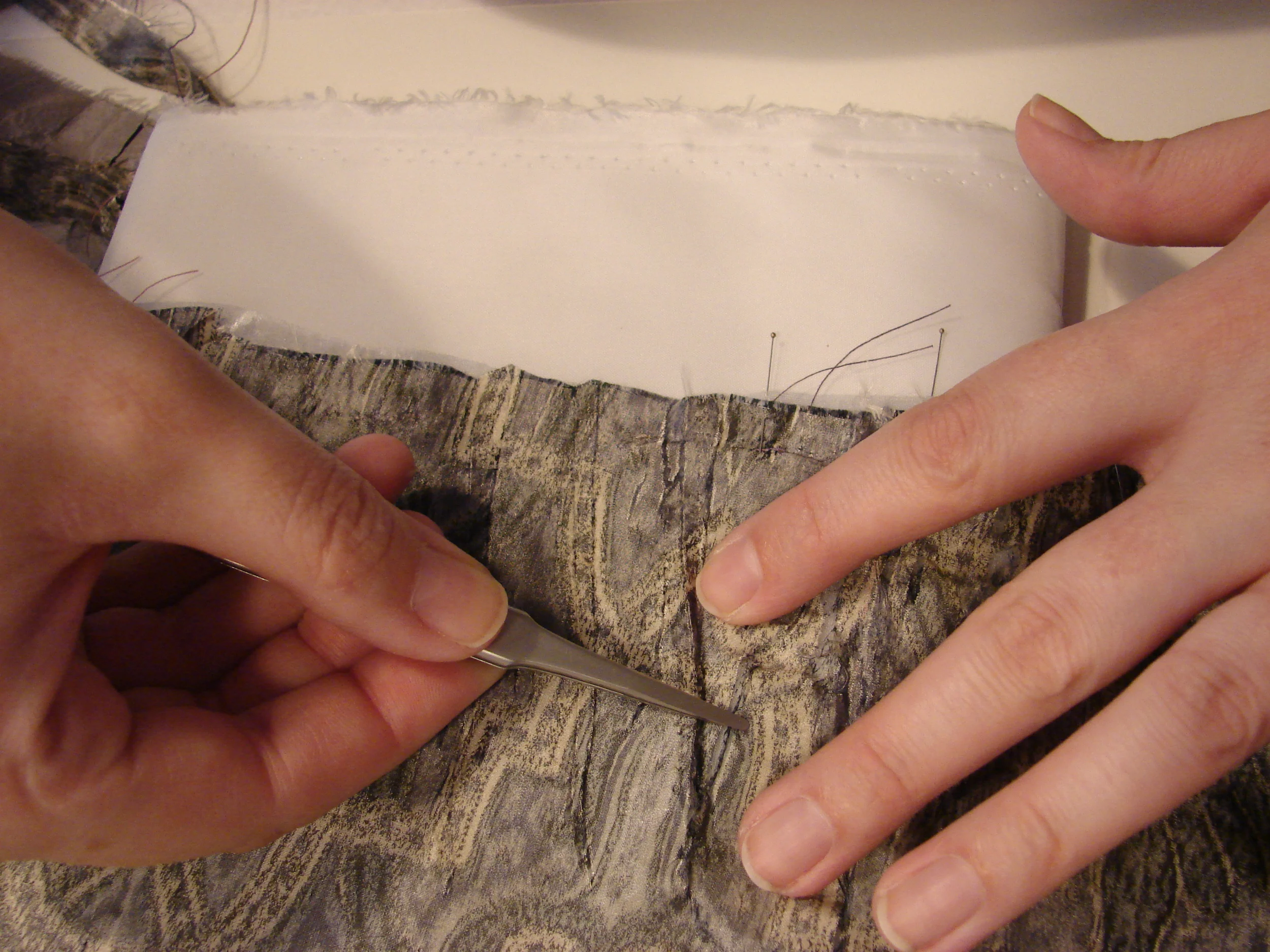
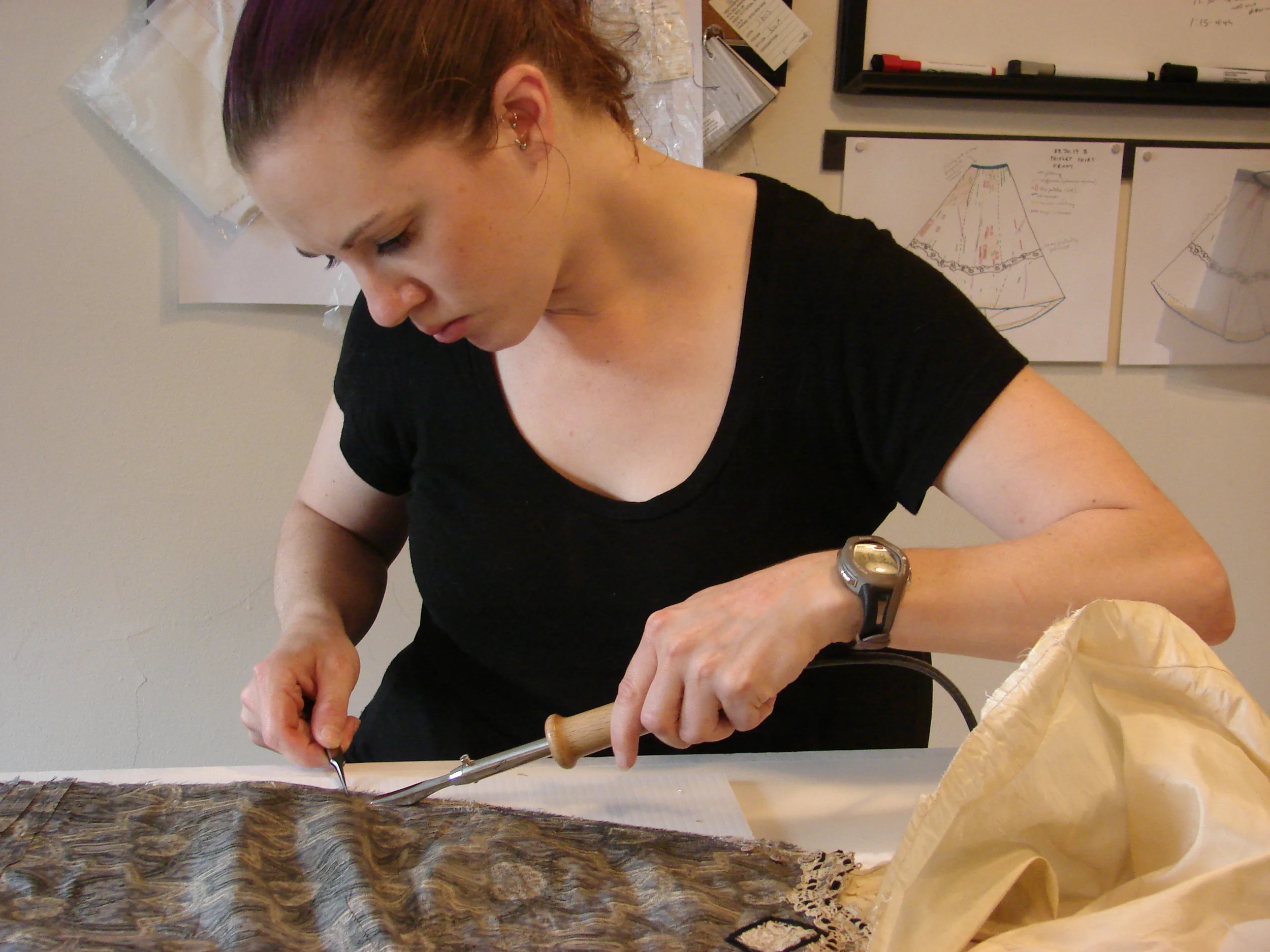
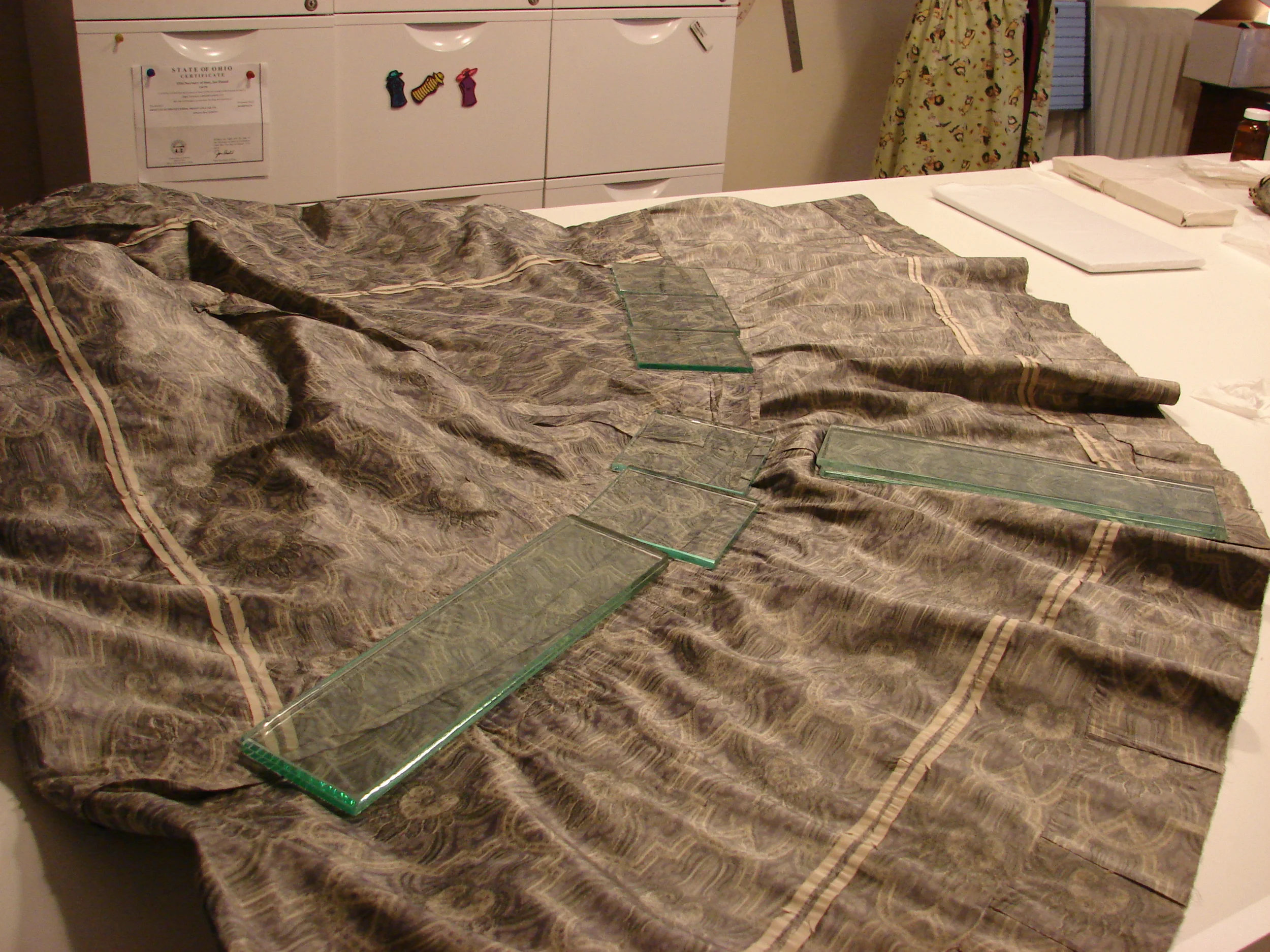

Your Custom Text Here
This blue and grey printed silk ensemble was treated for widespread weakness and areas of loss. It had become papery and fragile. Adhesive patches and stitching were used to repair the damage enough that it can be displayed again.
This blue and grey printed silk ensemble was treated for widespread weakness and areas of loss. It had become papery and fragile. Adhesive patches and stitching were used to repair the damage enough that it can be displayed again.
The ensemble after treatment
Bodice after treatment
Bodice before treatment
Skirt after treatment
Skirt before treatment
Skirt waistband after treatment
The skirt waistband was reassembled with a custom-dyed silk edge, stable enough to support the skirt on display.
Sleeve detail after treatment
A custom-dyed silk habutai patch is used to infill the areas of loss and to support the weak and damaged area.
Sleeve detail before treatment
Both sleeves had splitting with loss, especially along the fold lines where they had been folded flat for many years.
Skirt waistband during treatment
The badly disintegrated waistband had to be painstakingly reassembled using adhesive support fabric and stitching to close extensive splitting and support the weakened, weight-bearing area.
Obie treating a bodice sleeve
The heated spatula is used to reactivate adhesive support while tweezers help realign loose threads and edges as support is applied.
Skirt during treatment
Glass weights were used to help correct creasing and distortion in the skirt. Here, they are laid along crushed seam allowances from the inside.
Bodice waist edge during treatment with pleats dismantled
The pleats along the bottom edge had to be temporarily taken apart in order to repair splits along the folded edge. Adhesive support applied to the reverse held the edges together. Laid thread couching was added to the face to prevent lifting edges after the pleats were refolded and stitched in their original positions.